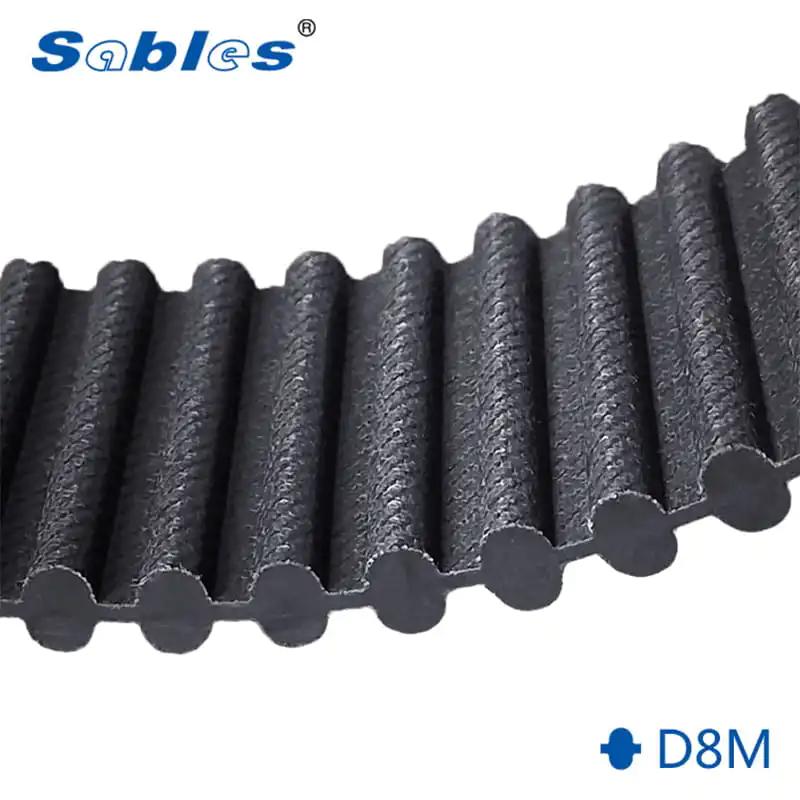The double sided design of double sided rubber synchronous belts plays a crucial role in enhancing performance in power transmission systems by providing unique operational capabilities that single sided belts cannot achieve. These belts, which feature teeth on both sides, are specifically designed to transmit power efficiently from both the inner and outer surfaces, making them ideal for complex machinery and multi-pulley systems where bidirectional power transmission is required.

One of the primary advantages of the double sided design is its ability to drive multiple components simultaneously within a compact space. In conventional systems using single sided belts, the need for multiple belts to accommodate different power requirements can result in bulky and complex layouts. However, double sided rubber synchronous belts streamline the system by allowing power to be transferred to various shafts or pulleys from both sides, optimizing space utilization and reducing the overall footprint of the machinery. This design feature is particularly beneficial in industries such as automotive manufacturing, textile processing, and printing equipment, where space constraints are a critical factor.
The enhanced load distribution provided by double sided rubber synchronous belts is another key benefit that contributes to improved performance. With teeth on both sides, the belt can engage with pulleys more effectively, ensuring balanced load sharing and minimizing stress on individual components. This not only reduces wear and tear on the belt but also extends the lifespan of associated components such as pulleys and bearings. As a result, maintenance intervals are reduced, leading to lower downtime and improved operational efficiency.
In addition to better load distribution, the bidirectional power transmission capability of double sided rubber synchronous belts allows for more complex motion control in machinery. These belts enable simultaneous forward and reverse motion, making them ideal for applications that require synchronized movement of different components. For instance, in conveyor systems, they facilitate the independent operation of rollers on either side, improving material handling efficiency and ensuring smooth product movement. This level of control and synchronization enhances overall system reliability and performance.
The rubber material used in double sided rubber synchronous belts also contributes to their enhanced functionality. High-quality rubber compounds provide excellent flexibility, resistance to wear, and the ability to withstand high temperatures and harsh operating conditions. This ensures that the belts maintain their integrity even under continuous operation, making them suitable for demanding applications such as heavy-duty manufacturing and industrial automation. Additionally, the rubber composition enhances the belt’s grip on pulleys, preventing slippage and ensuring precise power transmission with minimal energy loss.
Another important factor that enhances the performance of double sided rubber synchronous belts is their ability to reduce noise and vibration in power transmission systems. The even distribution of power across both sides helps to stabilize the belt’s movement, reducing fluctuations that can lead to noise generation and operational inefficiencies. This characteristic is particularly valuable in applications where noise reduction is essential, such as in medical equipment and precision instruments, where quiet operation is a priority.
Furthermore, the double sided design allows for more versatile system configurations, enabling engineers to design complex systems with fewer components. By using a single belt to perform multiple tasks, manufacturers can achieve cost savings in terms of materials, installation, and maintenance. This flexibility also means that adjustments and modifications can be made more easily, allowing for greater adaptability in dynamic industrial environments.














